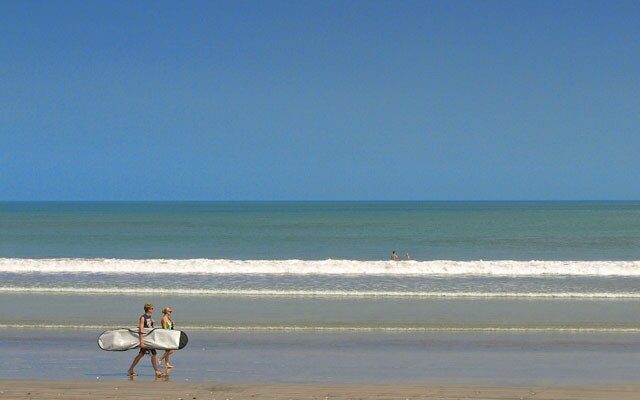Kuta
Kuta
is a popular resort in Bali. The local beach, perhaps the most famous, occupies a narrow isthmus at the western end of the island and is just north of the airport. Travelers began gathering here in droves after discovering in the 1960s that they could enjoy the outdoors at minimal cost. Stories spread in Australia about the “great wave” in Kuta, so much so that the resort became an Australian surfer’s dream. Once a poor fishing village in a deserted area rumored to be haunted by unclean spirits, in the 1980s it became a violent place where liquor flowed and sometimes illegal drugs were sold. The spontaneous settlement soon grew: thieves, prostitutes, and dubious street vendors became a real problem. Today the drug trade has virtually ceased, but wallets and other valuables should be kept safe and never left unattended. The traffic here is more like a nightmare.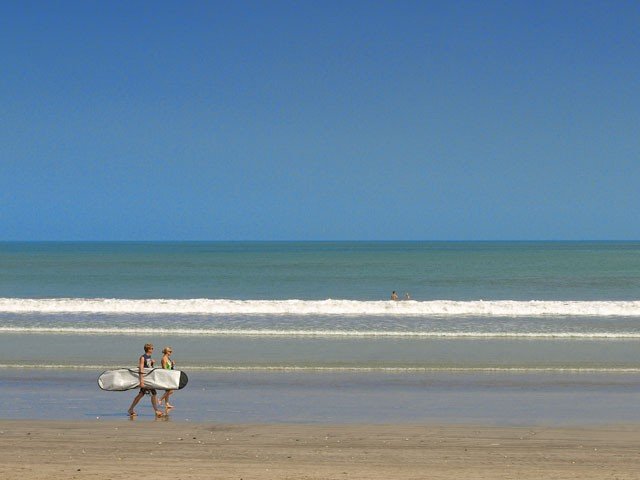
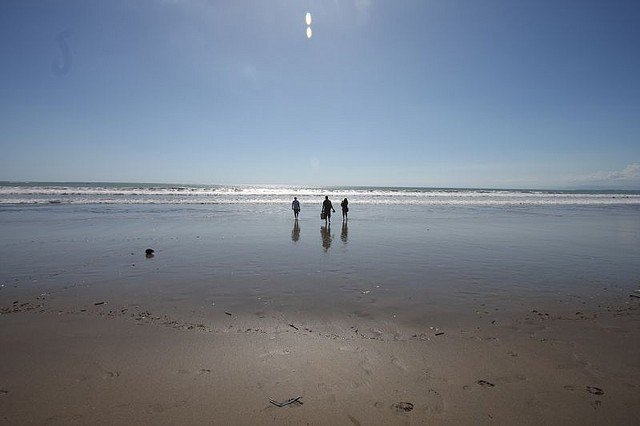
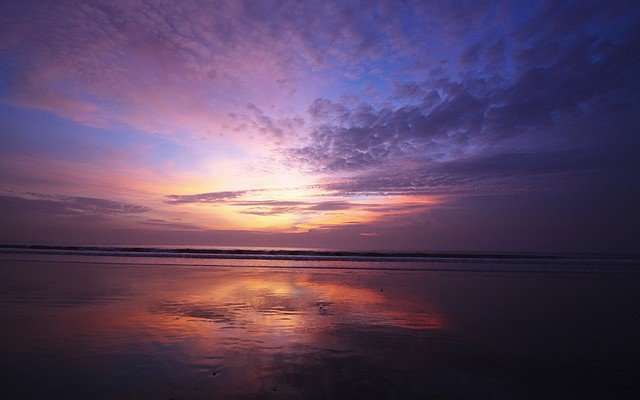
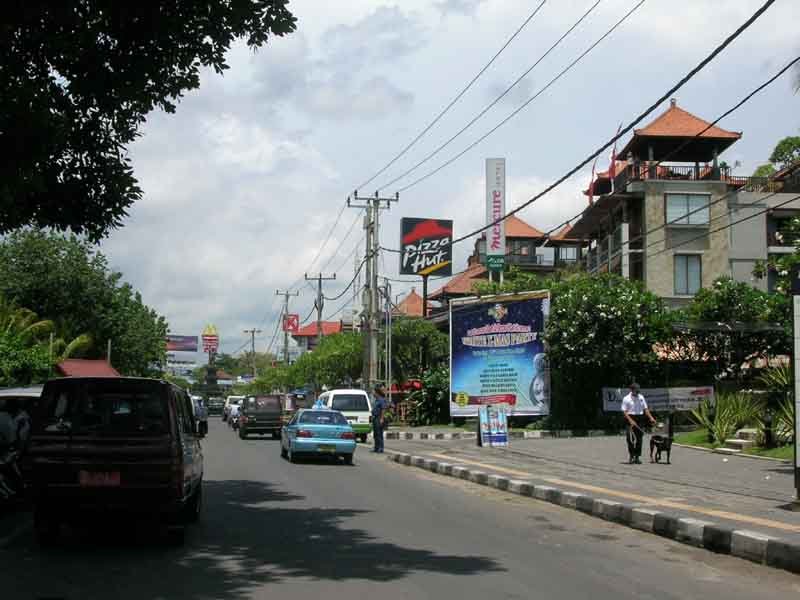
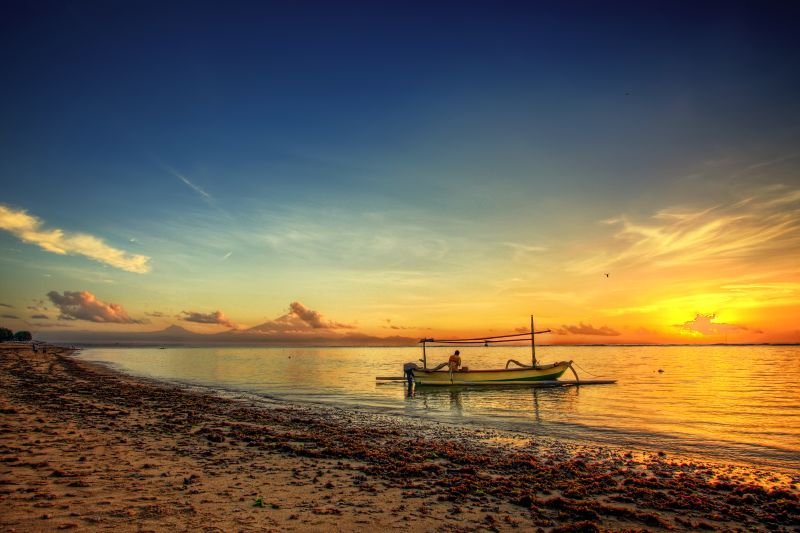
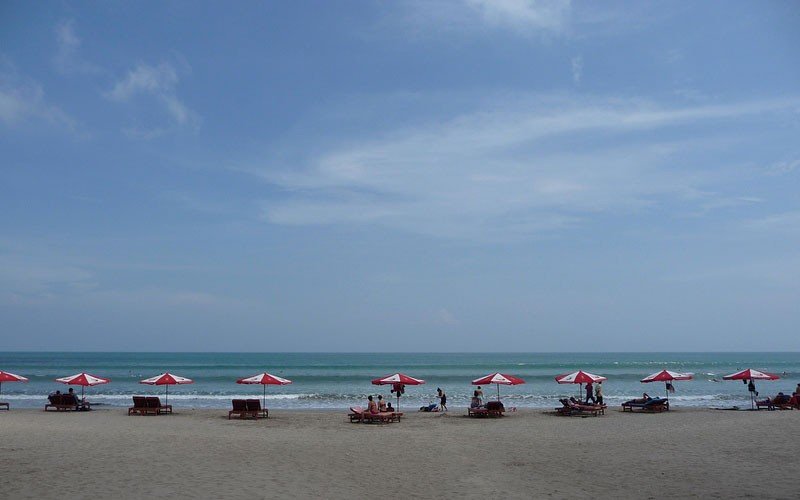
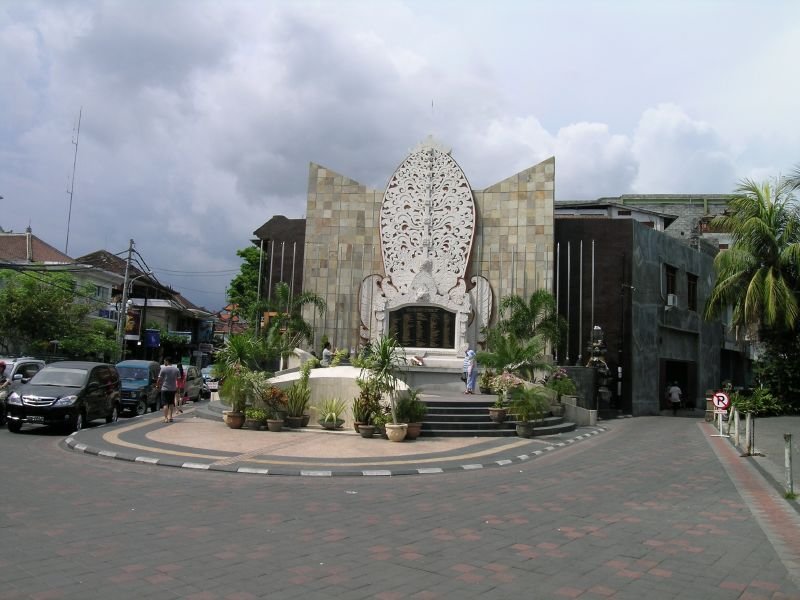
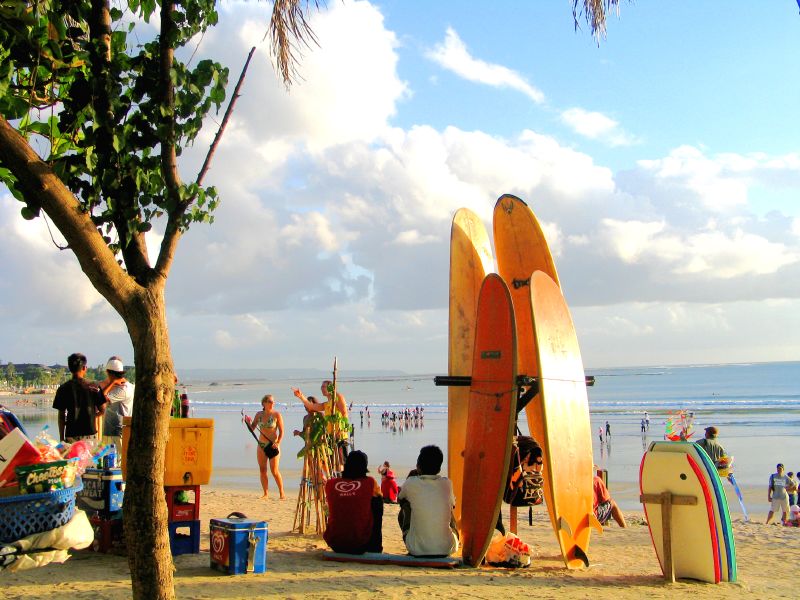
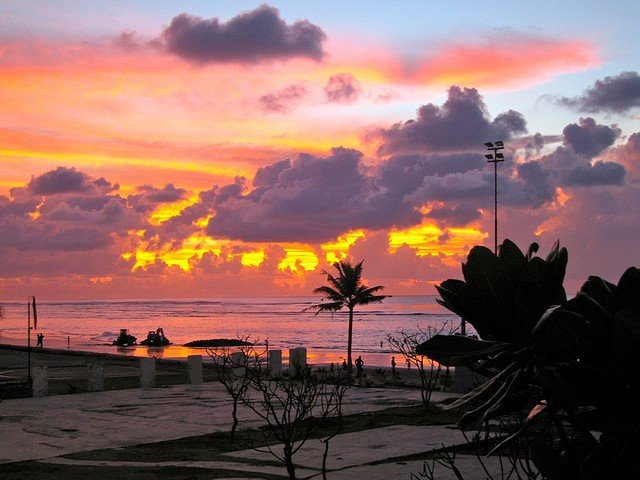
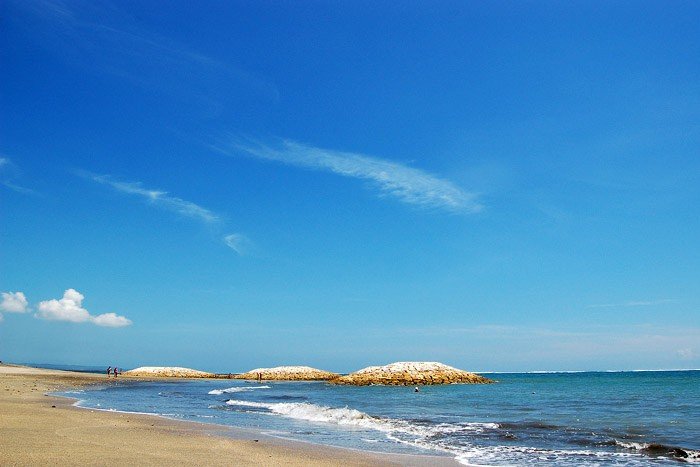
Video: Kuta
Contents- General Information
- Surfing
- Nightclubs
- Shopping
- Experienced Hands
- Tuban, Legian and Seminyak
- Transportation
General Information
Kuta, as well as its more “decent” and expensive northern neighbors – Legian, Seminyak and Kerobokan (as well as Tuban to the south) – offer a huge choice of hotels, restaurants and stores. There you will find the best restaurants with Italian, French, vegetarian, Greek, Spanish, Moroccan, Japanese, Korean, Indian and Indonesian cuisine, as well as stores with a fine selection of handicrafts, clothing made in the local ikat technique, Balinese-style casual and beachwear.
The beach is a must-see, and even if you can’t avoid the pesky vendors, it will still seem like a quiet paradise after the hectic city. Don’t swim beyond the flags put up by the coast guard: underwater currents and tides can be very dangerous. During sunset, when golden glints flicker on the water, many locals like to stroll along the beach or go canoeing. Youngsters organize beach soccer games or join tourists playing volleyball, while zealous masseurs catch the next wave of clients. Nighttime offers a new choice: you can store, pop into a restaurant, jostle in the crowd at a pub or wait until midnight when the clubs open.
.Kuta was opened to tourists by hippies in the 1960s. Cheap lodging, marijuana and hallucinogenic mushrooms attracted thousands of long-haired romantics from the “flower children” generation. Later, the most enterprising of them opened the first hotels and restaurants. Soon the greedy, all-pervasive hand of mass tourism, mostly Australian, reached Kuta. The hippies retreated to the quieter Legian. In the 80s, tourist fever swept over Bali and turned Kuta, Legian and Seminyak into one big creche. Nevertheless, each of these three components has its own specialty.
.Kuta is preferred by lovers of inexpensive and noisy vacations with busy nightlife and tough shopping. The beaches are crowded with vendors of all sorts of junk, gawkers and fans of original photos “I am against the background of the sunset”, “I am against the sea” and “I am against the surfers”. The surfers themselves walk importantly with their painted boards, willingly pose under the admiring looks of girls, but do not hurry to swim towards the waves. Unfortunately, such pandemonium does not contribute to the cleanliness of the beach. In the evening Kuta blossoms with myriads of lights. On the street Jl. Kartika Plaza female tourists are drawn by an irresistible force in the face of the shopping center of the same name. It is surrounded on all sides by restaurants, hotels and water amusement park “Waterbom”. The street ends with another shopping mall “Kuta Square” with department stores “Matahari” and “Galerie Kuta”. Further north, Kuta divides into two parallel streets – Jl. Pantai Kuta, which runs along the beach, and Jl. Legian, connected by narrow alleys. Souvenir stores, inexpensive sportswear and surfing gear are abundant here. Jl. Pantai Kuta, turning 90° from the beach, intersects with Jl. Legian and forms a small but quite remarkable square, Bemo Corner, where bemos that go to Legian, Seminyak and other neighborhoods gather chaotically. The parking lot for bemos to Denpasar is 50 meters away, on Jl. Raya Kuta. If you go further down this street, you can find the tourist information office “Wadung Tourist Office” (Jl. Raya Kuta, 2. Mon – Fri 8.00-15.00, run 8.00-12.00). However, except for polite smiles, its employees can not help anything, and advertising brochures can be picked up in any hotel.
.As evening approaches, various dark personalities are on the offensive, offering their dubious services. They are convinced that the tourist must buy drugs from them, rent a girl of non-severe behavior and go with her by cab to a fish restaurant. In any case, this threatens the simpletons with at least a loss of money. Bustling and lively at first, J1. Pantai Kuta, colored by the lights of the “Hard Rock Cafe”, by the middle of its empties out into the territory of boring 4- and 5-star hotels.
.
But on Jl. Legian and the surrounding alleys, life is booming. Bars with live music neighbor with stores, Internet cafes, rental stores and other joy of young people – the main contingent of Kuta. The Bounty and Bounty-2 discos fill up after 9pm with European and Australian women, “horrible on the face, kind on the inside”. Not far from them stands the Monument of Human Tragedy, a memorial to the victims of the 2002 terrorist attack at the Sari Club, and a plaque with the names of the victims, against which those more fortunate like to be photographed.
.Further north, Kuta flows smoothly into Legian, formerly a separate fishing village. The population here is smaller, the average age of the public passes 30, the waves on the beach are higher than in Kuta. Legian – for those who like to rest on the quieter, but if you want to not mind and have fun, good to the same Kuta can walk or go to the same Kuta for 1 -2 dollars in a cab. Legian beach is not separated by road from the hotels and is not so littered. Not far from the intersection of Jl. Legian and Jl. Melasti a living reproach to prudence towers construction “Bali Bangi” for jumping upside down on a rubber harness. In the evening, the wealthy crowd gathers at the famous Goa 2001 club, smoothly flowing past midnight to the equally stylish The 66. But this is already the territory of Seminyak – perhaps the most fashionable Balinese resort now.
.
There is good infrastructure, fine restaurants and clubs, as well as the latest craze for lovers of so-called pravesi – villas for rent. Noisy companies and couples on their honeymoon rent houses with a pool, surrounded by a high fence of lush tropical vegetation. Villa can be fashionable and expensive, can be modest and cozy, but they have one thing in common – absolute protection from the eyes of strangers. At the service of guests cooks, servants and other whims, which can only get for money. The cost of renting small villas is comparable to a room in a good hotel with an incomparable level of comfort and the very “prime”. Seclusion cottage village with all the advantages of urban infrastructure around – the trump card Seminyak that attracts more and more vacationers with medium and high income. Many houses and apartments are owned by Australian-European expats who have chosen Bali as their permanent home. They also often own local restaurants and clubs, so the level of service and prices tend to Western analogs. On the northern edge of the village stands the small temple of Pura Petitenget, founded by the legendary Nirartha (visit during daylight hours, offerings).
.The coast north of Seminyak, from Petitenget to Bereva and Canggu, is built up with sparse expensive hotels and is only suitable for quiet low-noise relaxation and surfing. Currents near the coast are so strong that swimming for unprepared tourists is possible only in pools, which they are honestly warned by hotel staff.
.
In general, the resort Kuta – Legian – Seminyak is designed exclusively for lovers of surfing and inexpensive entertainment. Those who want to spend their vacation on the beach, swimming and sunbathing, it is better to look for other places, which in Bali, thank Brahma, plenty.
.
Surfing
The 8-kilometer coastline of Kuta – Legian – Seminyak is ideal for beginners. The waves are higher in Legian, especially at high tide. South of Kuta is the reef of the same name, where surfers are brought by boat, there are excellent left-handed waves. For emergencies on the beach in Kuta provides a lifeguard station, whose duty men play soccer and have affairs with girls. The village is overflowing with “surfer’s joy” stores, but prices are high. Renting a board for the day costs from 30,000 Rp per day.
.Surfing lessons are available at special courses in Kuta. The most famous ones are:
.- “Rip Curl School of Surf” (Jl. Pantai Arjuna, “Blue Ocean Hotel”, www.schooIofsurf.com).
- “Odyssey’s Surf School” (Jl. Pantai Kuta, near Poppies Lane 1, www.odysseysurfschool.com).
A day class costs about $40, a three-day course with an instructor in open water will cost four times that.
.The best time to learn is in the wet season, when the waves are small and not trying to cover the beginner with his head. In the dry season from April to October the waves get higher and wrap into tubes – it’s time to feel like a dashing rider from the surf commercials! Rescuers at this time put aside their affairs with the girls and work in the sweat of their brow, pulling out the water-swollen conquerors of the waves. Despite their efforts, the sea takes its toll every year. Its peak season reaches in July – August, when many uninformed tourists from Russia, who came to Kuta, surprised to find that it is absolutely impossible to swim without a board. At the same time, surfing competitions have been held for a quarter of a century.
.Nightclubs
Kuta and Seminyak are the heart of Bali’s nightlife, its pulsating rhythm and dancing till you drop. Nowhere else can you find as many raucous parties as transpire in the belly of their alleyways and the main dance artery of Legian Street. The best clubs, the best DJs and the latest in music have created Kuta’s fame as the most fun place in all of Indonesia.
.Shopping
If Kuta is considered Bali’s premier shopping destination, the Discovery and Matahari supermarkets in Tuban are its main pillars. The many small stores on Kartika Plaza, Pantai Kuta and Legian streets offer summer and sportswear from local and international brands, surfing, snorkeling and diving equipment, and an unimaginable selection of souvenirs and handicrafts. Surf stores, books, music and movie CDs can be found in Poppies-1 and Poppies-2 lanes. Souvenirs, batiks and art can be bought at the Art Market in Legian (Jl.Melasti).
.Experienced hands
Beach masseurs in Kuta are an entire organization, some masters have been working here for over twenty years. During the hot hours of the day, of course, they prefer to do their business in the shade of a canopy. Before they start the massage, they agree on a price and check that there is no sand on you, on the bedding or on their hands, otherwise you will feel as if you are being rubbed with sandpaper. Massage is central to Bali’s healing practices. “Beach” versions are the most primitive; most expensive hotels and spas will offer highly trained professionals.”
.Tuban, Legian and Seminyak
Kuta Beach can be understood as both the small area around the village itself and the entire coastline stretching from the airport north to Legian and beyond. Kuta’s neighbors are separate, more comfortable places. Tuban Beach, which is further south, has many large hotels, a huge shopping mall, and a family favorite water park with water slides and pool. The beach and streets are quieter in every way, but there can be problems with ocean pollution.
.
Legian, which adjoins Kuta to the north, is very similar at first glance: there are also plenty of places to dine, drink and dance along Jalan Melasti, Jalan Yudistira and Jalan Raya. The most idyllic time on Legian Beach is sunrise; surfers show up here at first light to try to ride the wave.
.
Further north stretches stylish and bustling Seminyak, home to some of the island’s best boutiques and homewares stores, as well as excellent restaurants, bars, nightclubs, spas, first-class hotels and expensive villas. Compared to Kuta, the beach here is more laid back. Luxury apartments and a chic nightlife attract a respectable crowd, mostly from Europe. This place is most indicative of how the island has changed over the years.
.A must-see is Jalan Laxmana and Jalan Abimanyu (also known as Dyana Pura), with dozens of restaurants representing all kinds of world cuisines; on Dyana Pura you’ll also find live music bars and gay venues. Along Jalan Raya Seminyak are lined with chic furniture houses and jewelry stores.
.
Following north, surfers can take a narrow path through rice paddies to reach Canggu Beach. The place is now built up with luxury villas.
Transportation
Public transportation choices in Kuta are few – in fact, they’re limited to flights of blue Bemos going from Denpasar’s Tegal Terminal via Jl. Raya Kuta to Veto Corner Square and making a loop in Kuta on the way back to the capital. Thus, they do not reach Seminyak and almost all of Legian. However, in the evening hours they are not in Kuta, all flights with an interval of 20 – 30 minutes are limited to the morning and afternoon hours. But on the roads of the resort splashes a sea of spilled cabs of blue color with meters of the company “Blue Bird” (tel. (0361) 701-111). Boarding costs 4,000 Rp plus 2,000 Rp for each subsequent kilometer. Thus, an end-to-end trip from Tuban to Seminyak will cost a ridiculous 15,000 Rp, or 40 rubles in Russian money. It is inconvenient to take a cab in Poppies alleys, which are always jammed with traffic. You can stand in place for a long time, so it is better to go to one of the main streets, remembering the direction of one-way traffic, and catch a car there. In any case, when boarding you should make sure that the meter is on, and if the driver tries to refuse to take another cab, otherwise the cost of the trip will increase at least twice. In Kuta there are also horse-drawn dokars, on which you can ride from nothing to do for short distances, mercilessly haggling beforehand. Dark personalities yelling on every corner about transportation services, it is best to ignore, so as not to get into silly situations with bringing to “their” restaurants and stores, with attempts to push unnecessary goods and services.
.